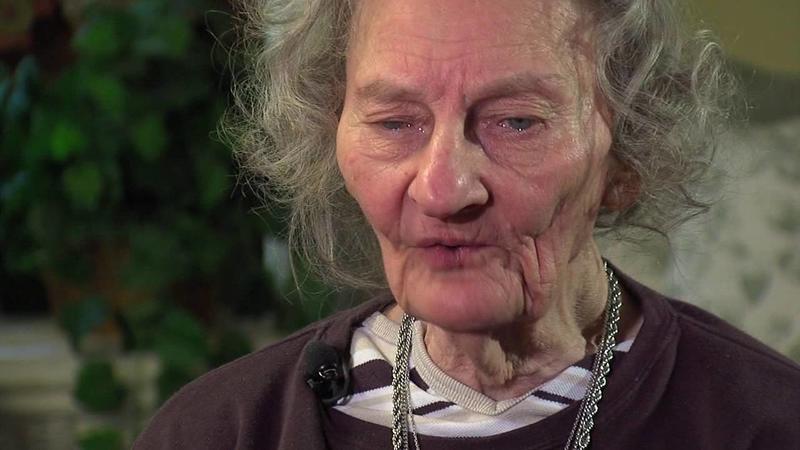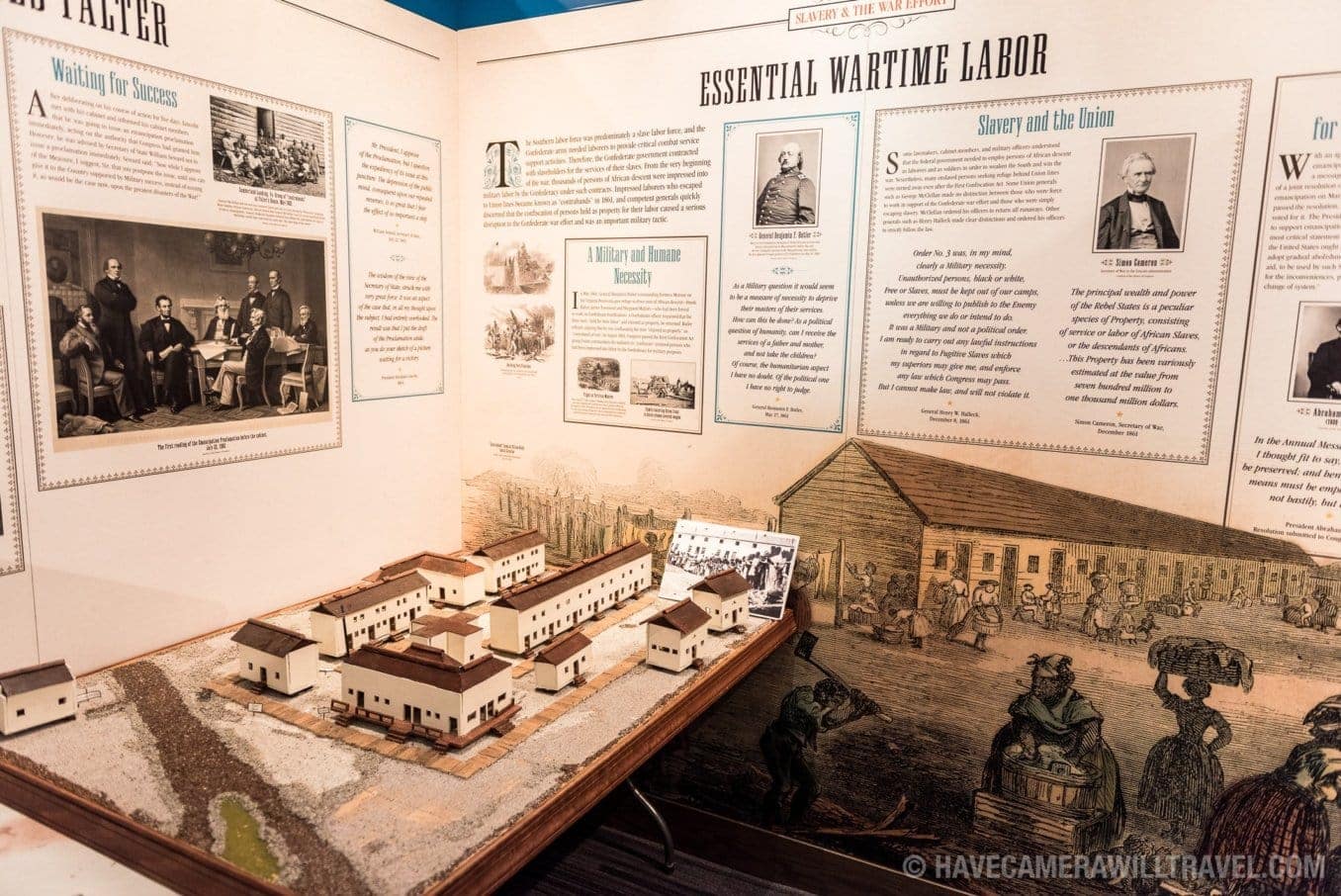News from the Civil War community
The African American Civil War Museum held a groundbreaking ceremony in October to mark an expansion project at the historic Grimke School in Washington, D.C.’s Shaw neighborhood. The $45 million redevelopment project will expand the museum to more than 12,000 square feet. The project also calls for redeveloping 133,000 square feet of mixed-use space, ranging from office and retail space to studios, condos and apartments.
The new space will allow for the display of more of the museum’s artifacts, expanded programming and a state-of-the-art media center.
One of the new exhibits will be “Slavery to the White House: The USCT Heritage of First Lady Michelle Obama.” This exhibit will explore the story of two of the former first lady’s ancestors, who served in the U.S. Colored Troops: Jerry Sutton/Suter, 55th USCT, and Ceaser Cohen, 128th USCT. Both are listed with their respective USCT regiments on the Wall of Honor of the African American Civil War Memorial, which is across the street from the museum. The memorial includes 209,145 names of those who served among the USCT.
The museum will remain open as construction begins on the project, with plans to be in the newly renovated space by September 2020, followed by a formal grand opening during Black History Month of 2021.
First opened in 1999, the African American Civil War Museum honors black veterans of the Civil War, slaves and descendants of slaves, who fought their way to freedom. In 2011, the museum moved to the Grimke building, named for Archibald Grimke [1849–1930], who was born a slave in Charleston, S.C., and became the second African American to graduate from Harvard Law School.
The African American Civil War Museum is at 1925 Vermont Ave., NW, Washington, DC 20001. Visit afroamcivilwar.org for more information.
Bud Robertson dies at 89
James I. “Bud” Robertson Jr., one of the most distinguished names in the study of Civil War history, died Nov. 2 in Richmond, Va. He was 89.

“Dr. Bud” wrote or edited many books about the Civil War, including For Us the Living: The Civil War in Paintings and Eyewitness Accounts (2010), Robert E. Lee: Virginian Soldier, American Citizen (2005); and General A.P. Hill: The Story of a Confederate Warrior (1987). His Stonewall Jackson: The Man, the Soldier, the Legend (1997), a book seven years in the making, with more than 950 pages and 2,854 endnotes, has been hailed as a masterpiece.
Dr. Bud taught at the University of Iowa, George Washington University, and the University of Montana before moving to Virginia Polytechnic Institute and State University (Virginia Tech), where he founded the Virginia Center for Civil War Studies in 1999. He served as a football referee for the Atlantic Coast Conference for 16 years before Virginia Tech joined the conference in 2004.
The family asks donations be made to the Virginia Center for Civil War Studies or the University libraries at Virginia Tech. The family also requests that people donate any possible Civil War artifacts to the Virginia Tech special collection. In addition, the Virginia Center for Civil War Studies established a tribute page at civilwar.vt.edu/tributes-to-james-i-bud-robertson-jr/.
Woman still receives Civil War pension
Irene Triplett is 89 years old and the daughter of a U.S. Civil War veteran. As such, she receives a Civil War pension from the Department of Veterans Affairs. Her monthly benefit is about $74, or $888 per year.

Ms. Triplett is the daughter of Private Mose (sometimes written as “Moses”) Triplett, who fought as a Confederate then a Union soldier during the war. Triplett enlisted at 16 as a Confederate soldier in the 53rd North Carolina Infantry in 1862. He deserted directly before the Battle of Gettysburg after escaping from a hospital and joined the Union Army in Tennessee the year after. He married Irene’s mother, Elida Hall, in 1924.
Although the Department of Veterans Affairs still pays benefits from 19th century wars to fewer than 100 people, Ms. Triplett is the last person to receive them from the Civil War. She resides in an assisted living facility in Florida.
Civil War in 360-degree reality
The American Battlefield Trust’s new four-part series Civil War 1864: A Virtual Reality Experience, gives viewers a chance to experience what it was like to be a Civil War soldier. Viewable in a variety of formats — from desktop computer to mobile device to virtual reality headset — these short films take you inside a Confederate sniper’s lair, into a Union defensive position, along on a reconnaissance patrol and inside a Union field hospital.
“We constantly strive to bring people closer to historical events in hopes that they can better understand or even feel them” said Garry Adelman, the Trust’s chief historian. “The immersive nature of virtual reality can help us approximate the personal experience of Civil War soldiers like nothing else has before.”
The Trust decided to pursue a VR experience because of its unprecedented ability to put the viewer into a scenario. In each video, the action takes place in 360˚. Those using a virtual reality headset or cardboard viewer can take best advantage of its directional sound, while mobile devices enable users to pinch-and-zoom for closer look at specific details.
Watch the trailer for Civil War 1864: A Virtual Reality Experience.
To create the experience, the Trust worked with Wide Awake Films, a Kansas City, Mo.–based creative media group that makes historical, commercial and corporate films.
“Our goal was to produce shorts that approximated everyday life for Civil War soldiers and civilians,” said the company’s founder Shane Seley. “It is one thing to read about the terror of battle or the drudgery of camp life, but a very different thing to live through it. We wanted to offer a real glimpse into the past that can’t be captured in books or standard documentaries.”
As such, authenticity was paramount. Wide Awake used professional actors and created exacting sets — including digging trenches, on a Kansas City–area farm. For even greater authenticity, the Trust enlisted digital animator Robert Cloutier to perform additional 360 animation, like flying cannonballs.
“This whole project is absolutely unrivaled in terms of realism by anything,” wrote one YouTube reviewer. “What a life-changing experience, the Civil War was instantly redefined for me as soon as this was over.” Another was even more succinct: “You’ve just revolutionized history storytelling.”
Learn more about Civil War 1864: A Virtual Reality Experience at www.battlefields.org/virtualreality, or explore the Trust’s entire collection — more than 500 videos in all — on its YouTube channel.
Retirement announced
After 20 years at the helm of the American Battlefield Trust, O. James “Jim” Lighthizer announced his retirement in a video clip in early November. Under his leadership, the Trust grew from 7,000 acres of preserved battlefield land to 52,000 acres today. Lighthizer oversaw the evolution of the Civil War Preservation Trust into the Civil War Trust, and later to the American Battlefield Trust, an umbrella organization that oversees the group’s diverse activities.
Today, the Civil War Trust and the Revolutionary War Trust (formerly Campaign 1776) continue as divisions within the American Battlefield Trust devoted to land preservation and education entities.
Before his work at the Trust, Lighthizer served as county executive of Anne Arundel County, Md., as a delegate in the Maryland General Assembly and as secretary of transportation to former Maryland Gov. William Donald Schaefer. Lighthizer effectively parlayed federal transportation enhancement funding into battlefield preservation.
The Trust’s board of trustees will conduct a national search to find Lighthizer’s successor. He will remain as president until his replacement has been hired. “I will also be available to help and advise the new CEO upon request and participate in the Trust’s advocacy efforts with lawmakers and in major preservation efforts,” he said. After his retirement, he will remain on the Trust’s board and will also serve as president emeritus.
And in related news…
In tribute to Jim Lighthizer’s coming retirement, the American Battlefield Trust announced The Jim Lighthizer Legacy Fund, dedicated to three high-priority projects holding special meaning for Lighthizer. They are Gaines Mill and Cold Harbor battlefields in Virginia, the Liberty Trail in South Carolina, and the Maryland Campaign, which includes land in West Virginia.
To inaugurate the Lighthizer Legacy Fund, the Trust seeks to save 278 acres near Shepherdstown, W.Va., where Confederates held off Union forces at the Sept. 19–20, 1862 Battle of Shepherdstown in the aftermath of Antietam.
For more details, visit battlefields.org/give/lighthizer-legacy-fund .





